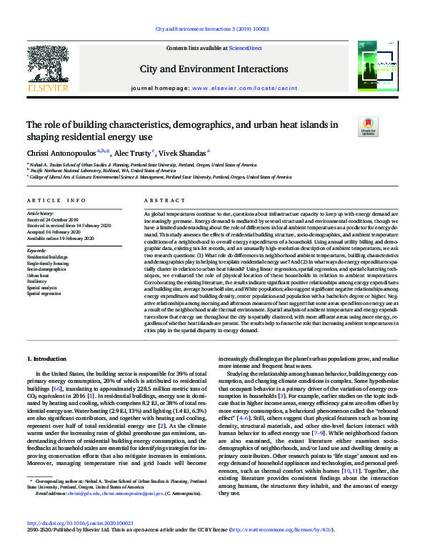
- Climatic changes -- Effect of human beings on,
- Urban heat island,
- Urban climatology,
- Sustainable development
As global temperatures continue to rise, questions about infrastructure capacity to keep up with energy demand are increasingly germane. Energy demand is mediated by several structural and environmental conditions, though we have a limited understanding about the role of differences in local ambient temperatures as a predictor for energy demand. This study assesses the effects of residential building structure, socio-demographics, and ambient temperature conditions of a neighborhood to overall energy expenditures of a household. Using annual utility billing and demographic data, existing tax-lot records, and an unusually high-resolution description of ambient temperatures, we ask two research questions: (1) What role do differences in neighborhood ambient temperatures, building characteristics and demographics play in helping to explain residential energy use? And (2) In what ways do energy expenditures spatially cluster in relation to urban heat islands? Using linear regression, spatial regression, and spatial clustering techniques, we evaluated the role of physical location of these households in relation to ambient temperatures. Corroborating the existing literature, the results indicate significant positive relationships among energy expenditures and building size, average household size, and White population; also suggest significant negative relationships among energy expenditures and building density, renter population and population with a bachelor's degree or higher. Negative relationships among morning and afternoon measures of heat suggest that some areas spend less on energy use as a result of the neighborhood scale thermal environment. Spatial analysis of ambient temperature and energy expenditures show that energy use throughout the city is spatially clustered, with more affluent areas using more energy, regardless of whether heat islands are present. The results help to frame the role that increasing ambient temperatures in cities play in the spatial disparity in energy demand.
Published by Elsevier Ltd.
This work is licensed under a Creative Commons Attribution 4.0 International License.
